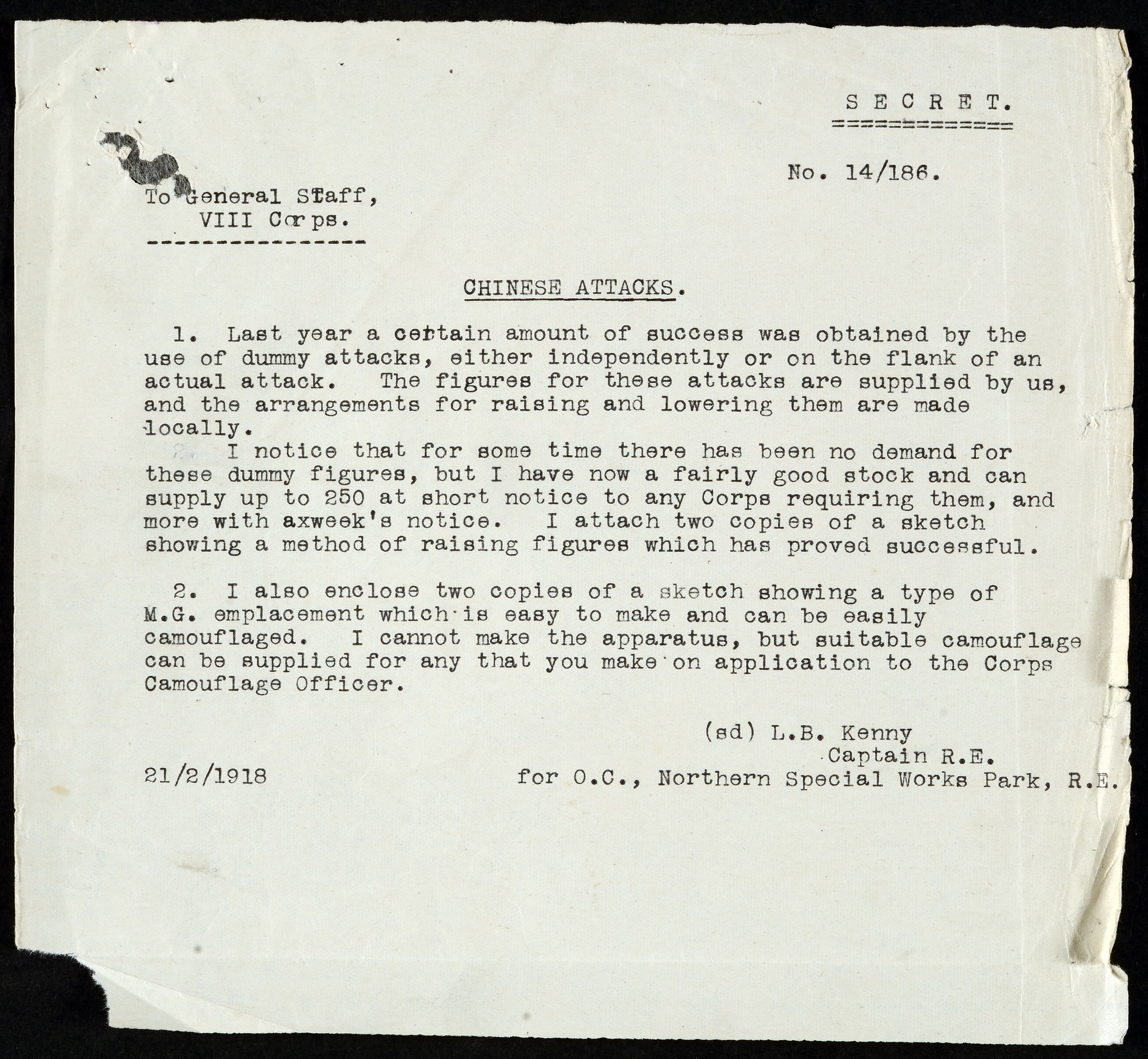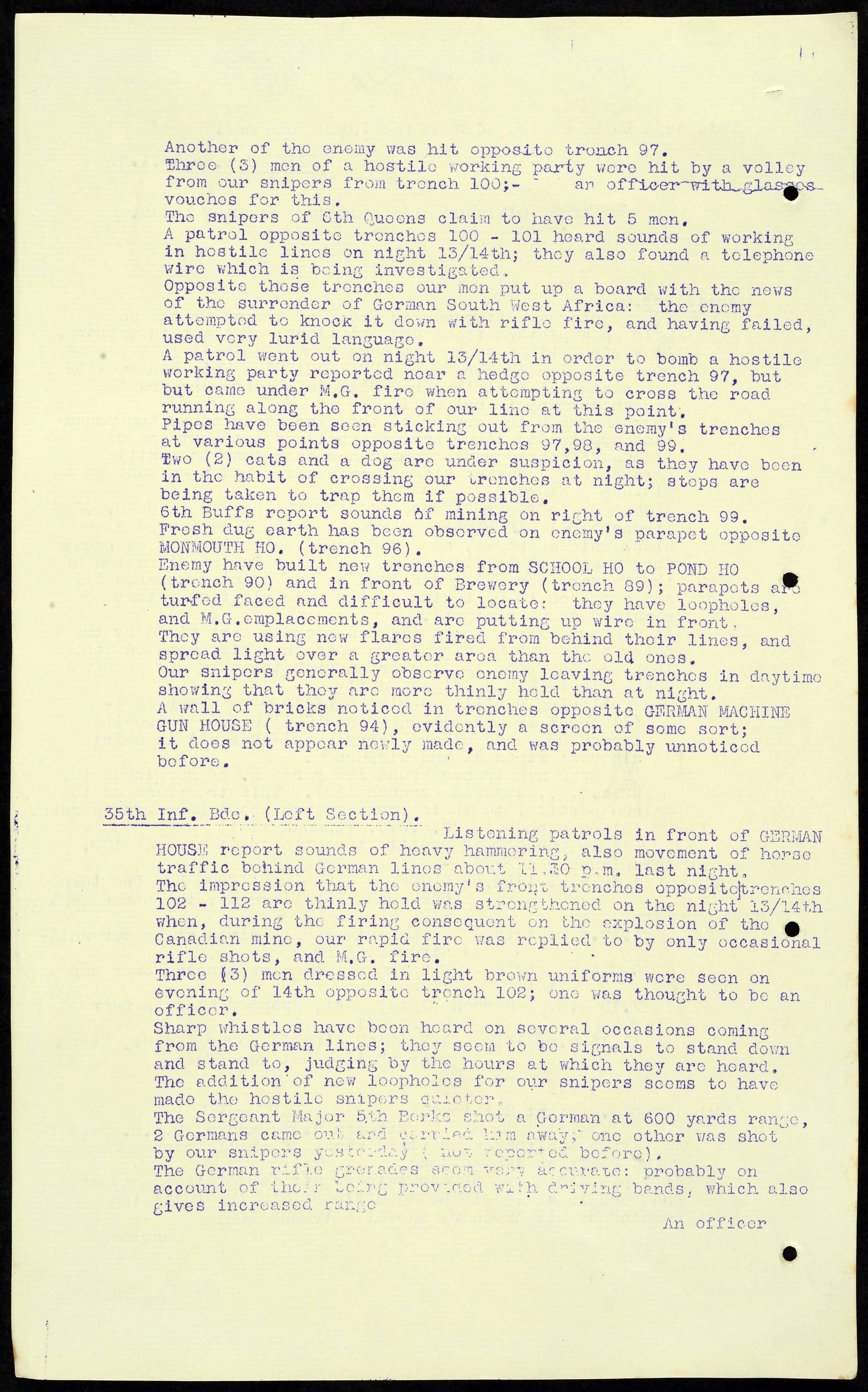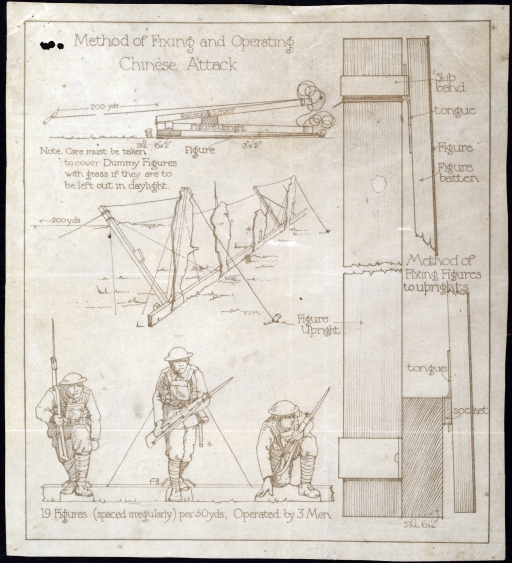A second batch of almost 4,000 digitised First World War unit diaries from France and Flanders have been put online by the National Archives in London.
The new release of unit diaries contains records relating to the last of the Cavalry and numbers 8-33 Infantry Divisions sent to the Western Front in the First World War.
The diaries cover the whole period of the units’ involvement in France and Belgium from their arrival at the front to their departure at the end of the war.
They reveal simple but effective tactics such as “dummy soldiers” operated by strings being used to fool the enemy. But they also document more advanced technologies such as the first use of German flamethrowers and the first (British) gas attacks.

Note from Captain L.B. Kenny on ‘dummy attacks’, dated 21/2/1918; © Crown copyright, image courtesy of the National Archives WO 95/1678 (1)
A report on the attack at Hooge on July 30 1915 about the use of flamethrowers, states: “2nd line trench saw a sheet of flame go up rapidly behind the stables….The Germans were using liquid fire… the fire ran down G5 and G4 trenches as fast as a man could run, the flames appearing about 10ft high.”
The advances in technology even led to cats and dogs being suspected of working for the Germans.
Intelligence report no 19 in unit war diary WO 95/1822 reports: “Two cats and one dog are under suspicion as they have been in the habit of crossing our trenches at night; steps are being taken to trap them if possible.”

© Crown copyright, image courtesy of the National Archives WO 95/1822 (4)
William Spencer, author and military records specialist at the National Archives, said: “This second batch of unit war diaries provides detailed accounts of the actions of the next troops to arrive on the Western Front.
“They show the advances in technology that made it the world’s first industrialized war with many mounted troops going into battle at first with swords on horseback and ending the war with machine guns and tanks.
“They also reveal the troops’ experiences and responses to new military technology as it developed throughout the war.”
Indian cavalry
Also included in this batch are records of the Indian Cavalry – the first troops from the Commonwealth to join the British Army with first actions in Givenchy in the autumn of 1914 and the South African Brigades whose first major contribution was at the Somme where they lost about 80% of their men in the battle of Delville Wood.
And there is the unit war diary of the Welsh Guards regiment which was only formed in 1915 and saw its first fight at the Battle of Loos in September 1915.
More than 10,000 people across the world have already volunteered to tag names, places and other details in the diaries since “Operation War Diary” was launched eight weeks ago.
Operation War Diary is a joint project between the National Archives, the Imperial War Museum and Zooniverse.
The unit diaries can be seen on the National Archives’ First World War 100 portal.
Source: The National Archives
Date of press release publication: 13th March 2014
Images © Crown copyright, courtesy of The National Archives
Posted by: Mike Swain, Centenary News
